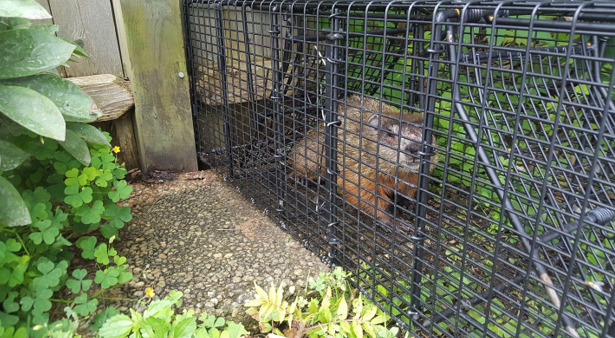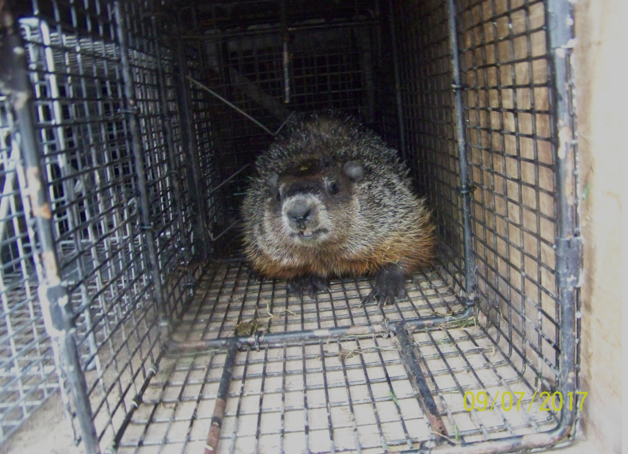 Groundhogs are close relatives of woodchucks, and so you may have difficulty in groundhog identification.
Groundhogs are close relatives of woodchucks, and so you may have difficulty in groundhog identification.
They are nocturnal animals that are most active at night, and you will see the effects of their activities during the day when they are fast asleep in their burrows.
Groundhogs are small animals that have strong feet, which help them to dig through the soil and create labyrinths with different routes. These rodents are reservoirs for many diseases and therefore are a public health risk.
In your yard, they also dig up plant roots, damage underground piping systems, and are a general nuisance. Their burrow entrances can cause accidents to you and your pet animals, and so you must eliminate them from your yard.

Tips For Elimination
- Remove All Attractants: Groundhogs, like most animals, come to your yard in search of food to sustain them. They feed on vegetables and berries, and so if you have ripe fruits that are within their reach, they become permanent uninvited guests. You can keep them away by clearing all debris and keeping your yard clean.
Pick fruits early and adequately dispose of those that are too ripe or spoiled. Always clear dirt piles and harvest debris to avoid giving them comfortable shelter and store fruits and plants properly.
- Fencing: Groundhogs are skilled climbers, but they prefer to burrow their way into yards, so building a fence that is at least a foot deep will keep them away. You can also make wire mesh fences around the plants to prevent them from getting through.
- Destroy Their Burrows: When you observe their burrow entrances, fill them up. Let the groundhogs get tired of digging burrows before you tire of filling them up. You will frustrate them into staying away from your yard.
- Use Decoys: Place decoy animals like owls and snakes in strategic areas within your yard and garden and attach bright lights to them. That will make the groundhogs uneasy and nervous. They are naturally shy animals, and groundhogs will stay away instead of engaging the decoys.
Humane Trapping: If you already have a groundhog infestation problem, you can trap the animals. This involves specialized skills, and your best bet is to engage the service of a professional. But to do it yourself you need:
- The right trap cage. Many stores have a wide variety of cages from which you can pick from. The cage must be efficient and easy to use. It should also have a door that shuts once it traps the groundhog.
- Bait and camouflage. Groundhogs are very sensitive animals and so to successfully trap them, you must make the trap look harmless. Cover the cage with grasses, sticks, or leaves to make it blend in with the environment and use their favorite foods such as berries as bait.
- Once you have trapped the animal, call your local wildlife control service to help you relocate it. To relocate the groundhog yourself, drive at least six miles from your house and drop the groundhog in an area where it will not be a pest to someone else. You must know the laws in your state that guide animal removal and relocation to avoid getting into trouble with the law.
Always wear protective clothing when handling groundhogs or any wild animals and remember to always involve professionals to find help and avoid costly mistakes.
Become a Harlem Insider!
By submitting this form, you are consenting to receive marketing emails from: Harlem World Magazine, 2521 1/2 west 42nd street, Los Angeles, CA, 90008, https://www.harlemworldmagazine.com. You can revoke your consent to receive emails at any time by using the SafeUnsubscribe® link, found at the bottom of every email. Emails are serviced by Constant Contact








